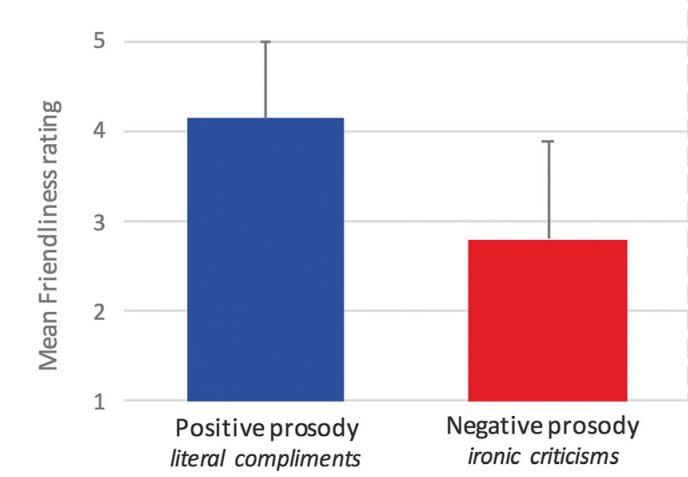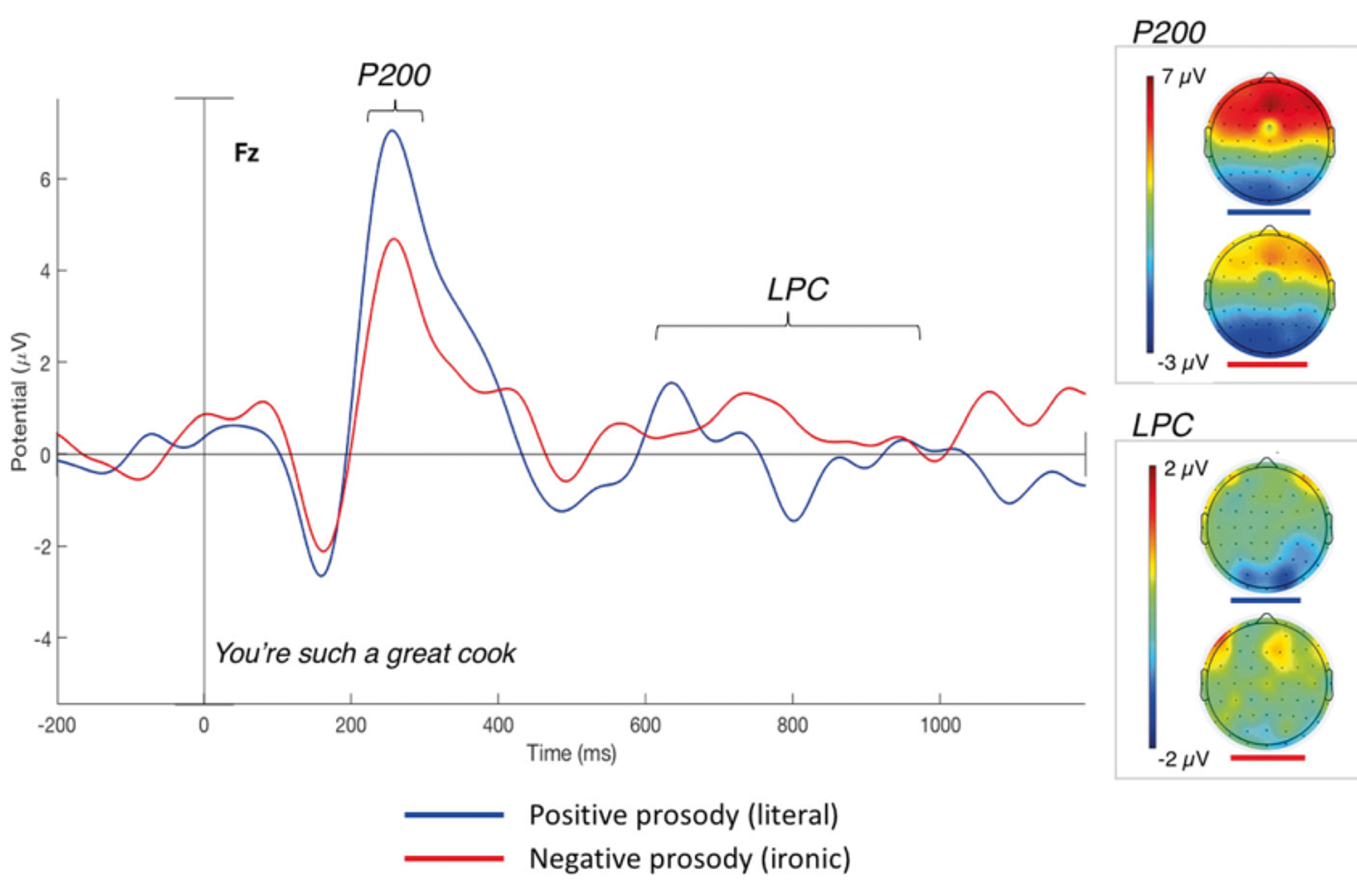With the return of the sunny days of summer (save for our friends in the southern hemisphere), you might find yourself in a situation where, having invited your best friends for a barbecue, you forget the sausages on the grill and serve them, er, completely charred. Seeing the blackened meat, one of them snickers: “You’re such a great cook.” Obviously, since the dish is burned, you know immediately that your friend is being ironic, or, more precisely, sarcastic. But what if you could not visibly see that you failed your meal – if, say, you added way too much salt instead? Would you be able to hear the sarcasm in your friend’s voice?
Chances are that you would. Some research shows that certain acoustic cues reliably convey sarcasm. But questions such as how – and how fast – our brain processes this information remained a mystery for a long time.
Maël Mauchand, Jonathan Caballero, Xiaoming Jiang, and Marc D. Pell (pictured below) addressed this topic in their paper Immediate online use of prosody reveals the ironic intentions of a speaker: neurophysiological evidence published in the Psychonomic Society journal Cognitive, Affective, & Behavioral Neuroscience.

Teasing apart irony
Irony is a type of figurative language in which the person’s intention contradicts the content of their speech. Or, put simply, irony is expressed when what they mean is not what they say. The most common form of irony is sarcasm. In which we use sarcasm by complimenting to actually convey a criticism. People can detect sarcasm by identifying a mismatch between the content (“You’re such a great cook!”) and the context (a poorly barbecued meal). Often, though, the context is not obvious, which is why we rely on the speaker’s ironic tone of voice.
To assess how the brain uses the tone of voice to differentiate between literal and ironic speech, the authors used Event-Related Potentials (ERPs). In short, ERPs reflect the changes in cortical electrical activity that follow categories of events (such as literal vs. ironic utterances) by averaging a large number of individual trials. By using ERPs, the authors can understand the time-course of certain cortical electrical activity patterns (often called “components”) in response to events, in this case, literal vs. ironic utterances. These results allowed the authors to draw insights into the cognitive processes involved in understanding literal – or not – meanings.

Here’s what the authors did. They had speakers pronounce short phrases, such as “You’re such a great cook,” with either a literal or ironic tone. These stimuli were played to participants while measuring their ERPs both at the start of the utterance and at a later point when a potential ironic mismatch would become clear (e.g., the word “great”), all the while participants rated the perceived level of friendliness of each utterance on a scale from 1 (not at all friendly) to 5 (very friendly). The authors chose friendliness because it forces listeners to take irony into account without explicitly telling them there will be irony (as is more likely to happen in real life).
As you may have predicted, ironic remarks, intended to criticize the listener, were perceived as less friendly than literal compliments that used the same words but used a positive (non-ironic) tone of voice. See the figure of the average friendliness ratings below.

Great, so people are pretty good at detecting sarcasm. But what’s happening when they do? When did participants realise the difference? Results of the ERPs showed that almost immediately after an utterance started (roughly 200 milliseconds), participants showed a difference in brain activity between ironic and literal speech. This difference is shown by the P200 component in the figure below (Figure 4 in the featured article). This difference also suggests that we can distinguish an ironic from non-ironic tone of voice even before a full word has been uttered!
What’s more, when looking at later ERPs, irony is actually easier to process than literal speech. The N400 and P600 components, which are spikes in electrical activity reflecting cognitive effort, are smaller for ironic compared to literal utterances. Because of its unambiguous acoustic signature, ironic speech is quickly detected and easy to process, while literal compliments may require a little more effort to make sure that the speaker is really being friendly.

Teasing apart teasing
Using the same methodology, the authors also analyzed the brain processing of an opposite form of irony – teasing.Teasing consists of making compliments using negative phrasing. For example, if a compliment to a well-executed gourmet dish is “You’re such a horrible cook!” They found similar results but with a lower magnitude. Keep in mind, however, that the results of the study partly depend on the experimental task: participants actively engaged in evaluating the speakers’ friendliness. In other contexts, the authors can’t guarantee that you will be such an effective mind-reader. So, just in case, make sure you don’t leave your sausages on the grill for too long.
Featured Psychonomic Society article
Mauchand, M., Caballero, J.A., Jiang, X., & Pell, M.D. (2021). Immediate online use of prosody reveals the ironic intentions of a speaker: neurophysiological evidence. Cognitive, Affective, & Behavioral Neuroscience, 21, 74–92. https://doi.org/10.3758/s13415-020-00849-7
